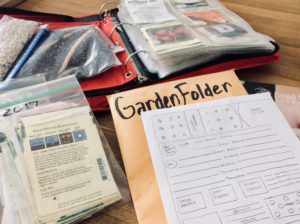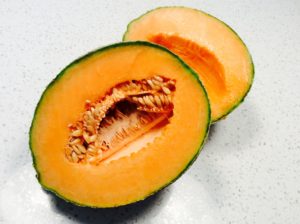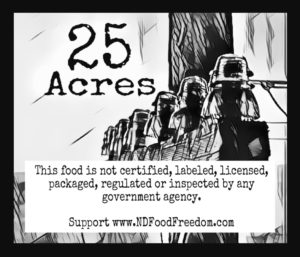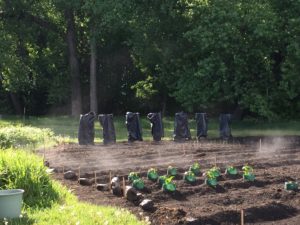Mothers Market Sells Garden Seeds?
Growing and selling produce in a Farmer's Market seems to have become all the rage. As more and more people look to add non-GMO, pesticide-free fruits and vegetables to their table, local markets have blossomed.
The growth is not found solely in big cities but is also in high demand in rural America. Customers want a greater variety of fresh, locally grown produce when they visit a farm stand. Not surprisingly, they are willing to pay more for unique, high-quality goods.
After having sold excess produce from my family garden, I knew I wanted to create my own farm-to-market business. Thus began the start of planting and growing with the intent of selling – very different from growing a simple family garden.
PRE-SEASON PLANNING

Considering the greater need for increased yields, I had to look at my annual seed order from a totally different perspective. Not only were the varieties of seed important, the days-to-harvest and the sheer number of seeds required, needed to be well planned out.
Multiple plantings, the logistics of space, time and overall demand were huge factors affecting what needed to be ordered. I had to take into account offering produce I didn't see offered in the previous year's market, as well as providing some of the standards sure to sell well.
Plotting out existing gardens, purchasing a greenhouse kit, fixing water spigots and discussing the use of additional cropland were mulled over. Planning for the upcoming growing season was not something I could put off until last minute.
DETERMINING WHAT TO SELL

To best gauge what products are sure to sell I took a close look at what sold last season. Whether it was myself or through other vendors, these produce items always sold well or sold out completely. Many, are easy to grow while being somewhat ordinary to the average gardener.
- String Beans
- Sm/Md Zucchini
- Various Squash
- Sm/Md Cucumbers
- Melons
- Tomatoes
- Sweet Corn
- Red & Sweet Onions
- Green/Red/Yellow/Orange Peppers
- Strawberries/Raspberries/Various Early To Mid-Season Fruit

A few other items sold surprisingly well but were more unique or unknown to those in our area. Not only did I price these items well, it gave me the opportunity to open dialogue on something such as Okra and its uses. Some more common produce such as Dill simply didn't thrive well amidst drought conditions – my excess sold quickly.
- Dill
- Okra
- Jalapeños
- Fresh Basil
- Beets
- Dried Herbs or Seeds
Additionally, there were quite a few produce items which didn't sell as well as I had hoped. This year, they will remain on the list for family consumption or offered in limited amounts at market.
- Potatoes
- Small Specialty Sweet Peppers
- Chili Peppers
- Stem Broccoli
- Cabbage
- Carrots
Every year I like to grow new-to-me vegetables in my garden. Last year it was cabbages and stem broccoli – both of which I had excess offered at market and didn't sell. These types of vegetables I consider Specialty Items. In many cases, it takes someone with specific culinary knowledge or an agreeable palate to want to buy them. In addition, many of these plantings produce limited amounts of harvestable edibles or take up loads of valuable growing space.
In the end, they could prove to be big money makers with the proper demand. Just proceed with caution when it comes to planting large amounts of Specialty Items until you know what that demand actually is.
- Stem Broccoli
- Cauliflower
- Leeks
- Sweet Potatoes
- Parsnips
- Various Herbs
- Egg Plant
- Cherry Tomatoes
- Brussel Sprouts
- Artichoke
- Red Cabbage

Early or late season items are also difficult to move or market through a short season farm stand. Either they come too early to be sold at a Farmer's Market or they come on too late. If you are fortunate enough to grow mid-season lettuce, good luck keeping it from wilting on the way to market. Our delayed North Dakota growing climate makes selling these items a crapshoot.
- Head Lettuce
- Leaf Lettuce
- Spinach
- Radishes
- Pumpkins
- Apples
- Various Late-Season Melons
DETERMINING HOW TO SELL
This is an important factor that many people overlook, exactly HOW to sell your goods. Without giving it too much thought, most people might think you can just plop your harvest on a table, stick up a sign and customers will come and purchase. Not so.
Clean, beautiful, fresh produce is, of course, the largest attractant of all. I'm not saying you should wash every piece of lettuce or scrub every carrot…but…nobody wants to deal with chunks of crusty dirt. The same goes for wilted beet tops or a rather bug eaten leaf of cabbage. Trim what is damaged or wilted.
The biggest piece of advice I can give you is to stand out from the crowd. Be better than those selling around you. Make your display as attractive as your produce is! Whether you sell by the package or the pound, make your prices clear. Display everything well and draw those customers in by laying out a beautiful vision before them.

Advertise your farm or garden so everyone knows who they are buying from. This introduction can go a long way when word of mouth spreads like wildfire. Utilize creative packaging, logo stamps or include a business card with your contact info and website address. For their convenience have on hand plenty of those grocery sacks you've been saving all winter.
Furthermore, be willing to lead and instruct your customers on ways to use what you sell. For instance, put together a Salsa Pack, complete with onions, tomatoes, cilantro, jalapeños and garlic if you grow it. Once they recognize the purpose of a possible purchase, they will be more apt to buy.
If you find that selling at the market isn't for you – try social media. Facebook, Craigslist, and various local classified sites are great tools to extend your reach. Take great pictures, offer to deliver and create a unique offering such as the Salsa Pack.
REALISTIC PLANNING
When putting together a business and a growing plan, it's important to not overreach or push yourself beyond what is realistic. Unless you have plenty of helping hands, it may be best to start small with something you can handle by yourself. Don't risk being overwhelmed by cooking up grand plans that haven't been thought through.
Consider every aspect of the season. From planting, weeding, watering, fertilizing, harvesting and marketing; these things take lots of time to complete. Add in your day job, vacations, illness and the weather, you'll be sure to have a busy summer.
Just remember, most successful businesses take time. They start small and grow year over year. They weed out what doesn't work and expand on what does.
KNOW THE RULES & REGS
Nothing will put a damper on selling produce quicker than finding out something last minute. Know the rules, regulations and pricing scales of each particular Farmer's Market you intend to sell at. Limitations can also be set by the State, County or City you are selling in.
Do your research. You may need to be on a list to sell at various markets, you may be on a waitlist, you may even need a tax identification number. These are all things you must know in advance.
DETERMINING WHEN TO PLANT

Once you have your list of seeds and plants you wish to grow, knowing when to plant them will be key to your marketing strategy. Too soon, you risk losing everything to frost. Too late, you risk not harvesting ahead of or in time with the rest of your competition.
If sowing seed starts, the start date will be determined by your last projected date of frost. Sow them too early and you'll likely have tall, lanky plants with compact root growth. If you start them too late, you'll have small delicate plants that wouldn't withstand rain or wind. I personally like to purchase my starts from a reputable greenhouse – less worry is worth it to me.
Historically, I've found that for seeds planted directly in the ground – earlier isn't always better. For North Dakota, planting June 1st under ideal conditions can be a great advantage for young plants. Those started earlier but damaged by frost, driving rain or wind, they generally expend a lot of energy just to repair themselves from the damage – if at all.
A greenhouse is a safe option to start plants earlier in the season or to extend longer-to-harvest vegetables. Take these facts into account when considering how to harvest sooner than your competition. For instance, a couple tomato plants added to the greenhouse will ripen sooner than those planted later outside.
For a perpetual harvest, one in which you can harvest consistently all market season spread out planting dates. Theoretically, if timed correctly, you can have 3-4 plantings of corn or green beans and you will have good crops of vegetables for a longer period than 1 planting.
MOTHER NATURE IS UNPREDICTABLE

Even with the best-laid plan, don't be discouraged when Mother Nature has plans of her own. Adapt, overcome and prepare for whatever she throws at you. There is no way to predict the weather, infestations or disease.
Understand that growing and selling is a sometimes fickle and risky way to supplement your income. Like that Boy Scout motto, "Be Prepared" and sit back and enjoy what Schoolhouse Rock called, "The Greatest Show On Earth…The Weather!"
#LifeOn25Acres
Mothers Market Sells Garden Seeds?
Source: https://homestead.motherearthnews.com/selling-farmers-market-plan-upcoming-growing-season/
Posted by: maloneruty2001.blogspot.com

0 Response to "Mothers Market Sells Garden Seeds?"
Post a Comment